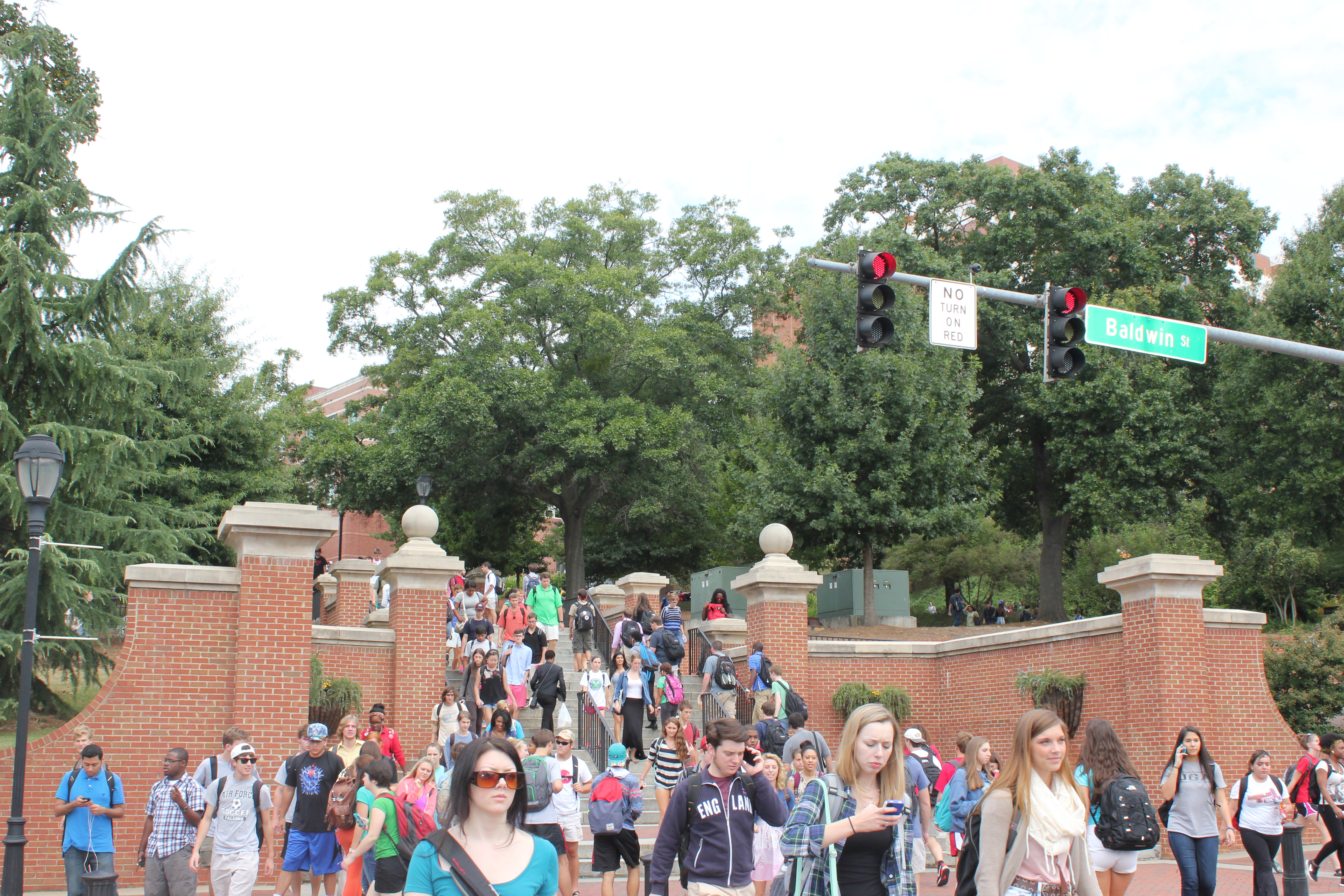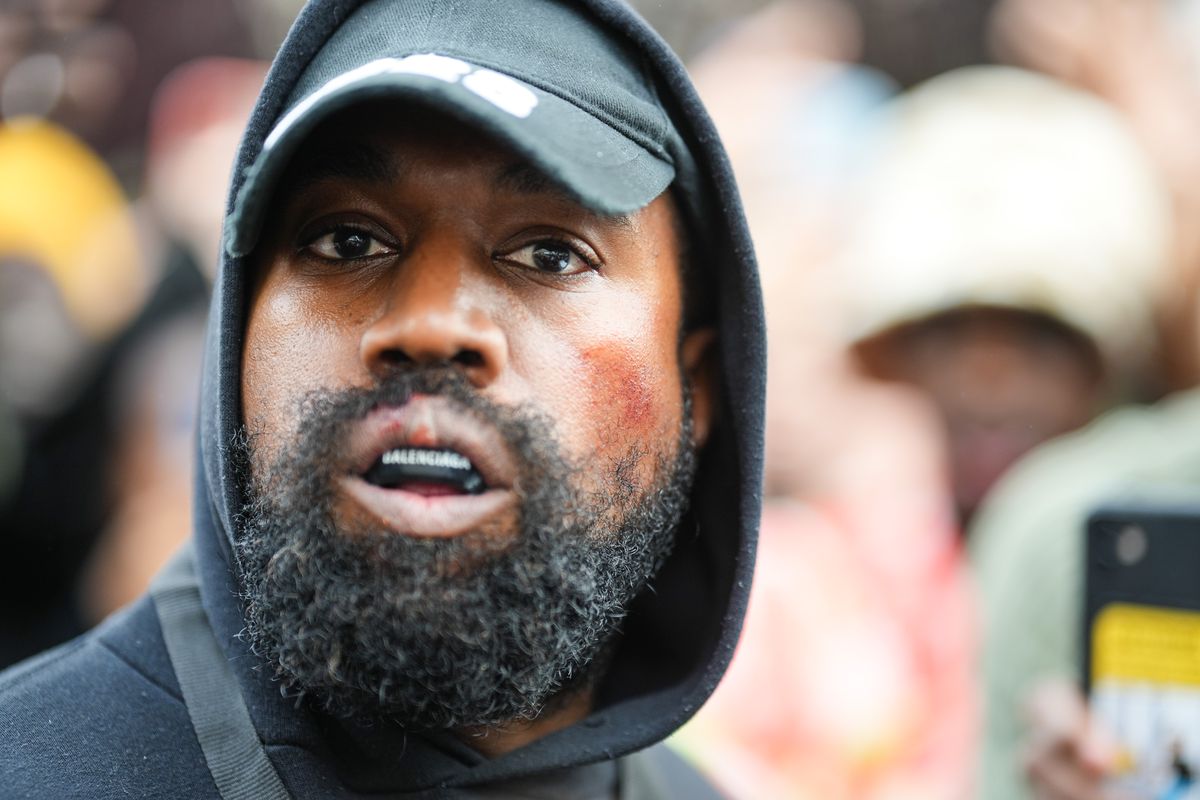
By: Leighton Rowell
Next year the United States will commemorate the 50th anniversary of the Civil Rights Act of 1964. Segregation no longer exists at the University of Georgia, but can it honestly say that it has made significant strides in diversifying its student body? In 1961, Hamilton Holmes and Charlayne Hunter became “the first African Americans to register at UGA after winning a legal battle to gain admission.” Having transferred from other colleges, the two students graduated in 1963, just one year before the Civil Rights Act. It would seem that UGA was, at one point, somewhat ahead of the times. Those days are not necessarily over, but the state’s flagship university has certainly fallen behind its peers.
As compared with Georgia’s other public institutions of higher learning, such as Georgia State University (GSU), UGA lacks diversity in a way that is not just noticeable, but truly palpable. The University’s current demographics are, disappointingly, more similar to those of the 1970s and 1980s than to those found today at its fellow state universities. My college environment is not a far cry from that which my father experienced when he attended GSU 50 years ago.
Of UGA’s 26,259 undergraduates in the 2012-2013 academic year, approximately 7 percent identified as African-American. Just 5 percent were Hispanic, with multiracial students accounting for a mere 2 percent. On the other hand, 38 percent of GSU’s 24,101 undergrads are African-American. Hispanic and multiracial students make up 8 percent and 3 percent of the student body, respectively. At UGA a staggering 74 percent of students are white, whereas at GSU only 36 percent are white. Perhaps GSU’s urban setting draws more students from the Atlanta area, which is more diverse than the rural areas that UGA students call home.
As Georgia’s flagship university, UGA should strive to model the demographics of the state. According to the US Census Bureau, Georgia is 62.8 percent white and 31.2 percent black. Although at a glance UGA does represent Georgia’s majority-minority distribution, African-Americans are irrefutably underrepresented in comparison with whites, who are indeed over-represented. The University of Georgia obviously has no trouble attracting a sufficient number of white students, but it struggles to enroll enough African-American students.
Statistics are not everything, though, and personal experience is often more telling than a number. As a white female, I am in the racial and gender majority at UGA. You might think this position would bring me comfort, but in all honesty it is the aspect of our university that makes me most uncomfortable. That I have taken classes with classmates who are all white is shocking, especially after being a minority for four years at my metro Atlanta high school.
I never took a class without African-American classmates during my time at North Springs Charter High School, which reported being 29 percent white and 51 percent black or African-American in 2011-2012. These people were not only my academic peers, but also my teammates and my friends. We challenged each others’ perspectives in classes, collaborated on articles for the school newspaper, and celebrated together when North Springs’ awful football team won its rare victory. My diverse high school was not exactly a utopia; there were definitely some racial tensions and divides at times, but for the most part all students got along.
North Springs graduates have matriculated at a variety of colleges and universities. Many of us attend public in-state institutions, like UGA, GSU, and Georgia Tech (GT). Some migrate across the country, to schools in New York, Texas, Michigan, and even California, but a substantial number of African-American students enroll at Historically Black Colleges and Universities (HBCUs), such as Spelman College, Howard University, Morehouse College, and Tuskegee University. I am glad that my friends are enjoying their experiences at HBCUs, but I am also dismayed that they did not believe they would find a similar community at UGA. North Springs is neither large nor competitive enough to be a top feeder school for the University of Georgia. Mammoth, less diverse schools, like Milton High School and George Walton Comprehensive High School, have historically sent hundreds of graduates to Athens. Still, there must be another reason why many races are so severely underrepresented at UGA.
Perhaps this phenomenon ─ that is, UGA’s continued homogeneity ─ is attributable to misdirected recruitment efforts on the University of Georgia’s part or the appeal of other colleges’ diversity. I do not know how many black or African-American students apply for admission to UGA, but I imagine those who do apply are as qualified as are their white counterparts. Let me be clear: I am not suggesting that our admissions office discriminates against black applicants. UGA could be much better, but it could also be a lot worse. Still, even though UGA’s various institutions aren’t as discriminatory as those found at the University of Alabama, I do think our attempts to diversify are inadequate.
The 2004 “UGA Faculty Statement on Diversity” stated, “The University rejects quotas and other mechanical approaches that treat any single factor as a defining feature of an applicant’s file. Nevertheless, it has compelling interest in considering race and ethnicity as one among many factors in consideration for admission.” Also in 2004, the Georgia Daze organization was founded by three African-American students to allow “admitted high school students from historically underrepresented groups to experience the University of Georgia campus life.” Sponsored by the Student Government Association (SGA), the Black Education Support Team (BEST), and the UGA Office of Institutional Diversity, Georgia Daze has been cited “as the deciding factor” in students’ decision to attend UGA.
In 2011, the University introduced a five-year diversity plan that included a goal to “increase the recruitment and retention of diverse students, with emphasis on those who are historically underrepresented.” That same year, a record-high 9 percent of the incoming freshman class identified as African-American. However, for every step forward, it seems UGA takes one step backward. The desire and drive to broaden our demographics clearly exists, but former UGA President Michael Adams admitted at a 2012 “Open Mic with Mike” event that the diversity plan had been adversely affected by the economic recession. Millions of dollars allegedly went into “the program to help students from underrepresented groups,” but these groups suffered when demand for financial aid was “up by 45 percent for the past three years.” The diversity plan’s goals will not be met by limiting resources for minorities, as the University did when it closed the African American Cultural Center. Rather, we need to increase support for groups like Georgia Daze and BEST.
While increasing minority student enrollment seems to be one of UGA’s priorities, it is imperative that we place an even greater emphasis on measurably diversifying the University of Georgia. The path to a more diverse UGA requires not only accepting more minority students, but also embracing them as an integral part of the campus and community. Every student is required to fulfill the University’s multicultural requirement, but how are we supposed to value diversity if we have only ever truly known one culture? The UGA admissions office website states that a “wealth of perspectives creates a dynamic learning environment for students to both draw from and contribute to.” I wholeheartedly agree. We only stand to be enriched by exposure to and appreciation for alternative points of view.

